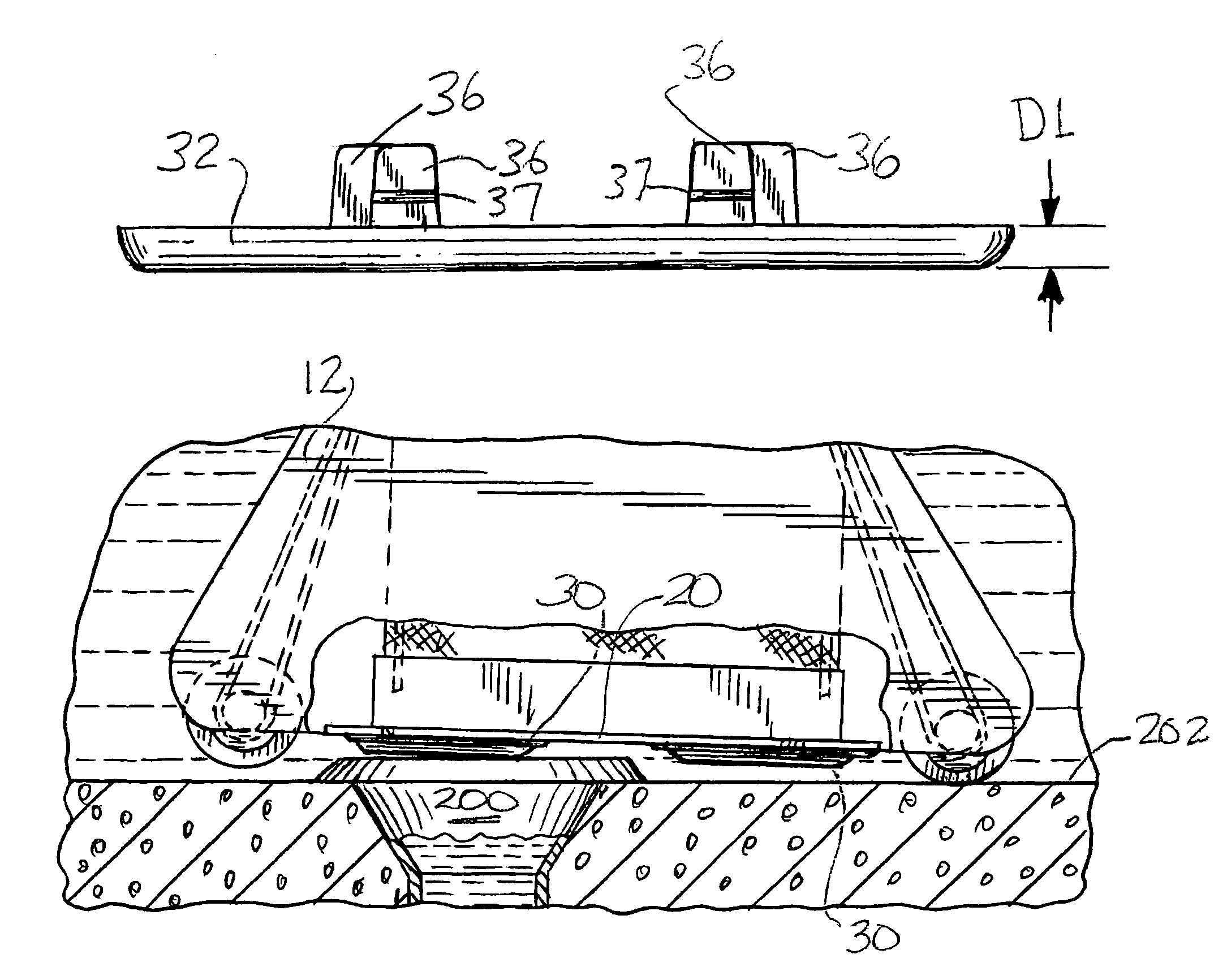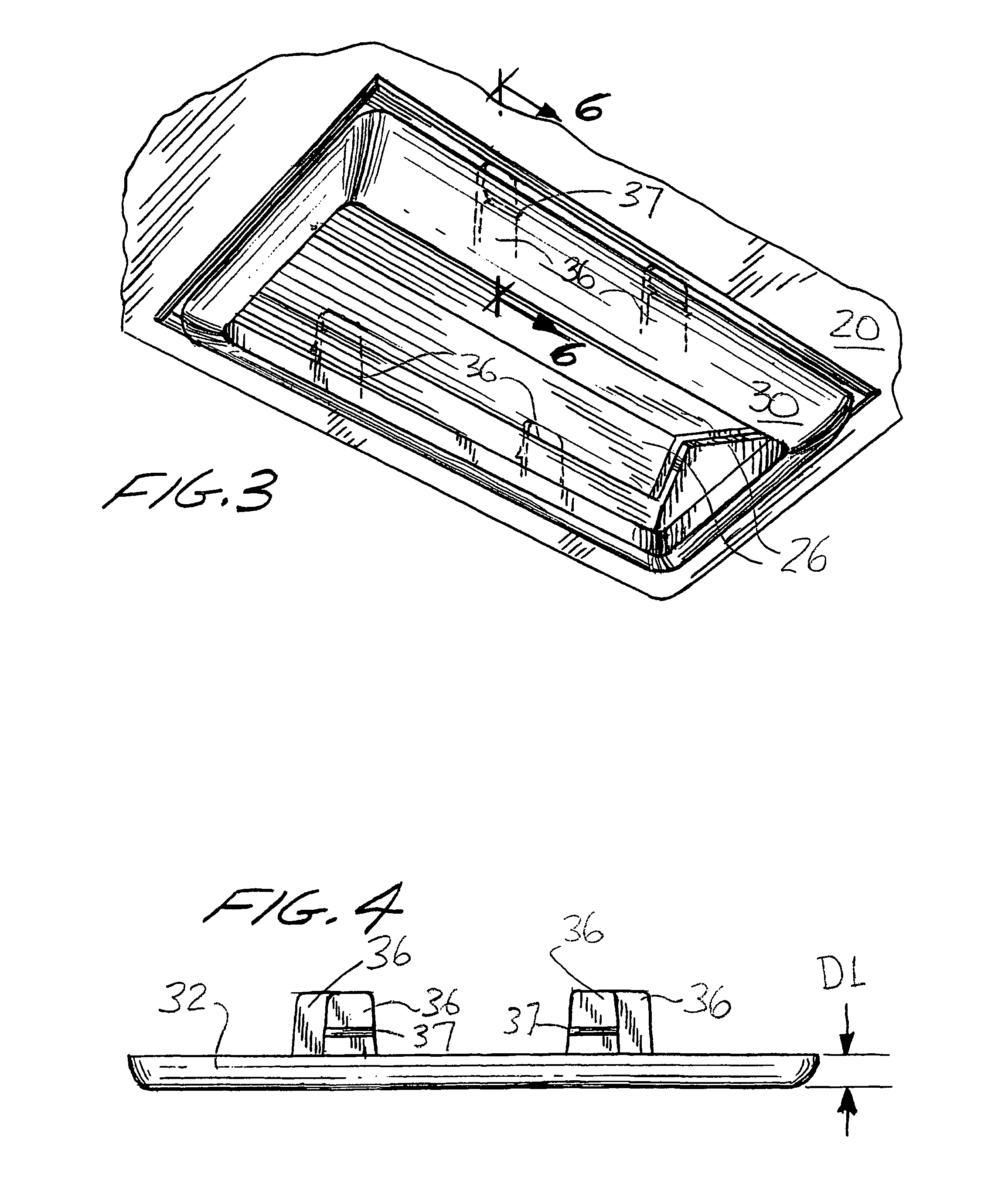Pool cleaner baseplate with inlet extension members and recessed wheels
a technology of pool cleaners and base plates, which is applied in the direction of gymnasiums, buildings, construction, etc., can solve the problems of reducing cleaning efficiency, prolonging cleaning time, and wasting externally provided electricity or power, so as to promote the laminar flow of incoming water, reduce turbulence, and ensure long-term attachment.
- Summary
- Abstract
- Description
- Claims
- Application Information
AI Technical Summary
Benefits of technology
Problems solved by technology
Method used
Image
Examples
Embodiment Construction
[0034]Referring to FIG. 1, a representative self-propelled robotic pool cleaner 10 of the prior art has an exterior housing 12, an internal filter assembly 14, transverse power driven rollers 16 and a baseplate 20 is schematically depicted. Baseplate 20 is attached to the bottom of the housing 12 and, as illustrated, has two inlet openings 24 that are closed by a pair of biased doors 26 that close when the water flow to the filter is stopped.
[0035]Referring now to FIG. 2, the baseplate 20 has been fitted with an inlet extension member, referred to generally as 30, that is assembled in a snap-fitting relation; a second inlet extension member is shown in position for attachment to the baseplate. As most clearly shown in FIGS. 3, 4 and 5, the inlet extension member 30 is formed with a plurality of upwardly projecting members, e.g., clips 36 that are semi-flexible and provided with projecting elements, e.g., ridges 37 that engage the baseplate.
[0036]FIGS. 4 and 5 are side views of two i...
PUM
 Login to View More
Login to View More Abstract
Description
Claims
Application Information
 Login to View More
Login to View More - Generate Ideas
- Intellectual Property
- Life Sciences
- Materials
- Tech Scout
- Unparalleled Data Quality
- Higher Quality Content
- 60% Fewer Hallucinations
Browse by: Latest US Patents, China's latest patents, Technical Efficacy Thesaurus, Application Domain, Technology Topic, Popular Technical Reports.
© 2025 PatSnap. All rights reserved.Legal|Privacy policy|Modern Slavery Act Transparency Statement|Sitemap|About US| Contact US: help@patsnap.com



